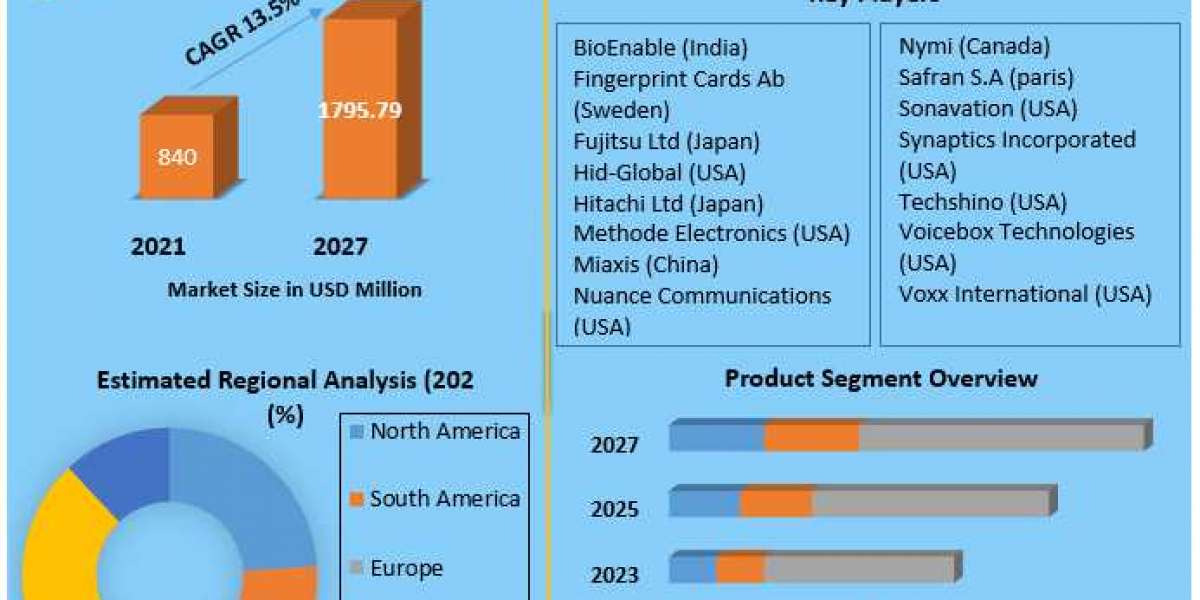The regenerative agriculture market refers to the economic ecosystem surrounding agricultural practices that focus on restoring and enhancing soil health, biodiversity, water retention, and carbon sequestration. This approach aims to create resilient agricultural systems that not only produce food but also contribute to environmental sustainability and climate change mitigation.
The global regenerative agriculture market is estimated to reach $16.8 billion by 2027, growing at a 14.0% compound annual growth rate (CAGR). The global market size was valued $8.7 billion in 2022.
With the rising awareness of the environmental impact of conventional farming methods, regenerative agriculture is emerging as a sustainable solution that prioritizes soil health, biodiversity, and ecosystem resilience. The regenerative agriculture market presents a compelling opportunity for businesses to tap into the growing demand for sustainable food production systems and promote a more environmentally conscious approach to farming.
Trends shaping the regenerative agriculture market:
- Increasing Consumer Awareness: Consumers are becoming more aware of the environmental and health impacts of conventional agriculture. They are actively seeking out products from regenerative farming practices, driving demand for sustainably produced food.
- Corporate Commitments: Many large food companies and retailers are making commitments to sourcing ingredients from regenerative agriculture. This includes commitments to reduce carbon emissions, improve soil health, and support regenerative farming practices throughout their supply chains.
- Government Support: Governments are increasingly recognizing the importance of regenerative agriculture in addressing climate change, soil degradation, and biodiversity loss. They are implementing policies and providing incentives to support the adoption of regenerative practices.
- Technological Advancements: Technological innovations such as precision agriculture, data analytics, and remote sensing are making regenerative practices more efficient and accessible to farmers. These tools help optimize inputs, improve crop yields, and monitor soil health.
- Collaboration and Knowledge Sharing: Collaboration between farmers, researchers, NGOs, and industry stakeholders is driving innovation and knowledge sharing in the regenerative agriculture space. This includes the establishment of networks, research partnerships, and demonstration projects to promote best practices.
- Regenerative Finance: There’s growing interest in financing models that support regenerative agriculture, including impact investing, sustainable agriculture funds, and carbon markets. These financial mechanisms provide incentives for farmers to adopt regenerative practices and generate additional revenue streams through ecosystem services such as carbon sequestration.
Know about the assumptions considered for the study: https://www.marketsandmarkets.com/pdfdownloadNew.asp?id=52420159
The North American region is projected to account for a major share of the regenerative agriculture market during the forecast period
North America is projected to dominate the global regenerative agriculture market during the forecast period. This is attributed to various prominent players present in the region that are developing strategies for promoting the adoption of regenerative farming practices. Awareness among farmers regarding the benefits of regenerative agriculture, coupled with active support from various players by offering a carbon credit program, is anticipated to drive the market in the region. Moreover, consumers in the region are willing to pay more for sustainably sourced food products, which is further boosting the growth of the market. Some of the major players headquartered in the region are General Mills, Inc (US), Cargill (US), Indigo Ag, Inc (US), Danone North America (US), and Pivot Bio (US).
Agroforestry is forecasted to account for the largest market share in the regenerative agriculture market
The variety of income streams generated by regenerative agroforestry increases economic resilience. In an agroforestry system, the variety of plant life increases soil fertility. In addition to promoting food production, this also minimizes soil erosion, manages pests and weeds, as well as maintains water cycles. Regenerative agroforestry also restores the habitability of agriculture for a wide range of animals and insects. This is significant because pollinators are required for 87 of the top food crops worldwide. Regenerative agroforestry fortifies the foundation for farming by imitating natural systems.



